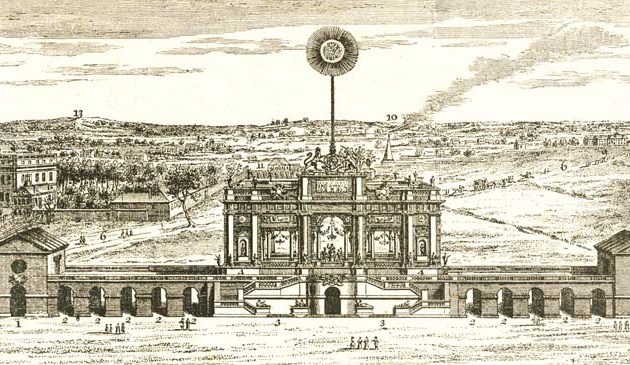The original Hammersmith Bridge

Hammersmith Bridge was one of the very earliest suspension bridges, and the first in the London area. When it opened in 1827 the original bridge was one of the most elegant on the Thames.
Hammersmith Bridge was the first suspension bridge over the Thames and the longest suspension crossing in the world at the time of its opening. Unlike many other London toll bridges it proved to be profitable for its investors. Its existence provided a stimulus for the growth of Hammersmith into a more important town to the west side of London.
At the turn of the 19th century Hammersmith was a growing, pleasant, and fashionable riverside village to the west of London. Queen Caroline, estranged wife of King George IV, set up home there until her death in the house in 1821.
The idea of creating a bridge over the Thames at Hammersmith, and thus a roadway that would link to the villages of Barnes, Richmond and Mortlake on the opposite bank, went back until at least the early 18th century. In the 1720s Daniel Defoe wrote:
In the village of Hammersmith…they design to obtain the grant of a market…and some talk also of building a fine stone bridge over the Thames; but these things are yet but in embryo, though it is not unlikely but they may be both accomplished in time.
It seems to have remained as “some talk” for the following century until Ralph Dodd took up the idea. Dodd was an energetic promoter and minor engineer of canals, tunnels and bridges. At the end of the 18th century he had made an unsuccessful attempt to create a tunnel under the Thames from Tilbury to Gravesend. He had more success with the creation of the Surrey Grand Canal at around the same time. He then turned his attention to the making of a crossing over the river between the City and Lambeth, that eventually opened as Waterloo Bridge.
In the early 19th century the need for a bridge between Hammersmith and the Surrey side of the river was becoming ever-more necessary. A dry crossing would save a detour of five miles via Fulham or Kew bridges for those wishing to pass between Hammersmith and Barnes. In 1817 Dodd promoted a parliamentary bill to build a privately-owned toll-crossing at Hammersmith. As is normal with the early Thames bridges there was opposition, in this case from the owners of the Fulham toll bridge (the predecessor of Putney Bridge), about a mile downstream. Dodd’s plan relied on the purchase of land owned by the banker Henry Hugh Hoare to create an approach road from the south but Hoare refused to sell, so the idea remained in limbo for a few more years.
A new petition was made in 1824, promoted by the local waterworks company, and this time Hoare agreed to sell. Despite opposition from the owners of Kew and Fulham bridges, an Act of Parliament was passed. The Hammersmith Bridge Company was formed and £80,000 raised. The engineer for the work was to be William Tierney Clark. He had been apprenticed as a millwright, then worked at the Coalbrookdale Ironworks in Shropshire. John Rennie was impressed with his work there and employed him at his Albion Works in London. Rennie then recommended him for a position at the West Middlesex Waterworks Company where Clark created an engine-house to pump water to Hammersmith from reservoirs at Barnes. He continued to live locally for the rest of his life.


